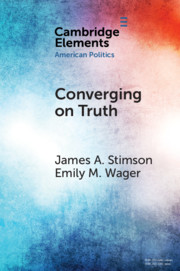Element contents
Converging on Truth
Published online by Cambridge University Press: 16 March 2020
Summary
- Type
- Element
- Information
- Series: Elements in American PoliticsOnline ISBN: 9781108876865Publisher: Cambridge University PressPrint publication: 09 April 2020
References
- 17
- Cited by

